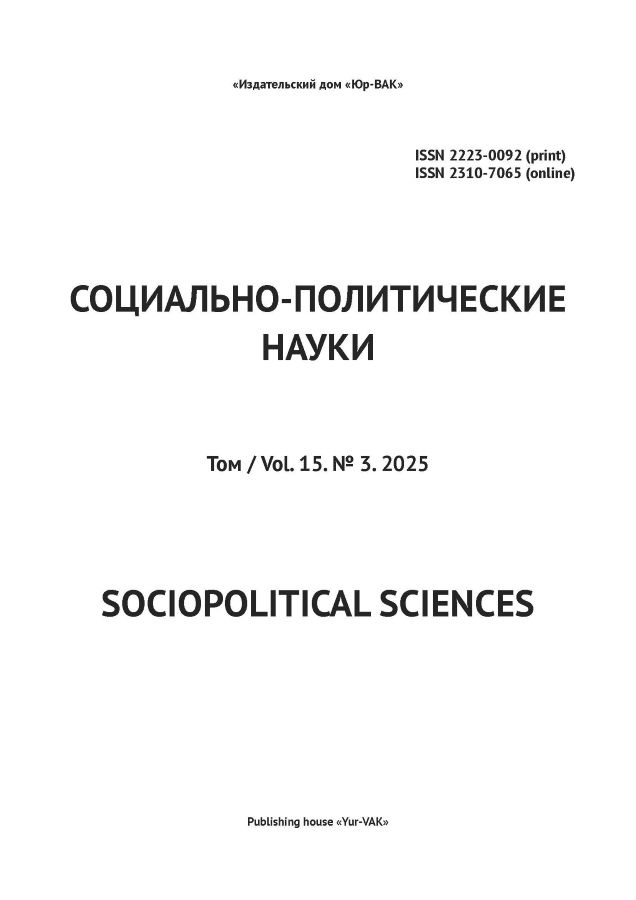High-Speed Highways as a Modern Geopolitical Megaproject
- Authors: Guoping C.1, Ivanova E.A.1,2
-
Affiliations:
- Patrice Lumumba Peoples’ Friendship University of Russia
- Moscow Power Engineering Institute
- Issue: Vol 15, No 3 (2025)
- Pages: 116-121
- Section: International Relations, Global and Regional Studies
- URL: https://journals.eco-vector.com/2223-0092/article/view/687866
- DOI: https://doi.org/10.33693/2223-0092-2025-15-3-116-121
- EDN: https://elibrary.ru/RZGZLB
- ID: 687866
Cite item
Abstract
The purpose of the research is to evaluate the effectiveness of the implementation of megaprojects in Russia and China. The ability and ability to initiate and successfully implement such projects in the national interest qualifies as a measure of the effectiveness and sovereignty of the State. The authors considered the essence of megaprojects and their role in the development of the national and regional economy, analyzed the most ambitious Russian megaprojects and the conditions for their implementation. The most significant risks of implementing megaprojects in Russia have been identified. The need for megaprojects is due to the intensification of global competition and the need to ensure the sustainable and safe development of the regions. Recommendations for improving the efficiency of megaprojects are proposed.
Full Text
About the authors
Cao Guoping
Patrice Lumumba Peoples’ Friendship University of Russia
Author for correspondence.
Email: 1042238109@pfur.ru
SPIN-code: 5738-1150
Postgraduate Student at the Department of Public Policy and History of State and Law of the Law Institute
Russian Federation, MoscowEkaterina A. Ivanova
Patrice Lumumba Peoples’ Friendship University of Russia; Moscow Power Engineering Institute
Email: ivanova_eka@pfur.ru
ORCID iD: 0000-0001-7350-6123
SPIN-code: 7723-2668
Cand. Sci. (Polit.); Associate Professor at the Department of Public Policy and History of State and Law of the Law Institute
Russian Federation, Moscow; MoscowReferences
- Si C. Large-scale engineering solutions. Monograph. Guizhou People’s Publishing House, 1988. 235 p.
- Lu G. Research on some issues in decision-making models in large-scale mechanical engineering. Hefei University of Technology, 2011. P. 32. doi: 10.7666/d.d142896.
- Donski-Lesiuk J. The importance of the 1520 mm gauge rail transport system for Trans-Eurasian international trade in the exchange of goods. Comparative Economic Research Central and Eastern Europe. 2022. No. 25 (1). Pp. 7–22. doi: 10.18778/1508-2008.25.01.
- Chen A. The role of China’s high-speed railways in the implementation of the Belt and Road Initiative. Business and Economic Research. 2015. No. 09. (In Chinese). DOI: JournalArticle/5b3b8c07c095d70f007ca779.
- Yushuwei Yu, Xiaoxin Liao. Review of research in the field of construction project risk management. Popular Science and Technology. 2013. No. 10. Pp. 36–40. (In Chinese). doi: 10.3969/j.issn.1008-1151.2013.10.015.
- Guo Xuedan. Geopolitical interpretation of “high-speed railway diplomacy”. Social Science. 2015. No. 06. (In Chinese). DOI: CNKI:SUN:SHKX.0.2015-06-002.
- Zhao Wei. Research on the political risks of China’s high-speed rail exit under the Belt and Road Initiative. Foreign Economy and Trade. 2016. No. 08. (In Chinese). doi: 10.3969/j.issn.2095-3283.2016.08.018.
Supplementary files









